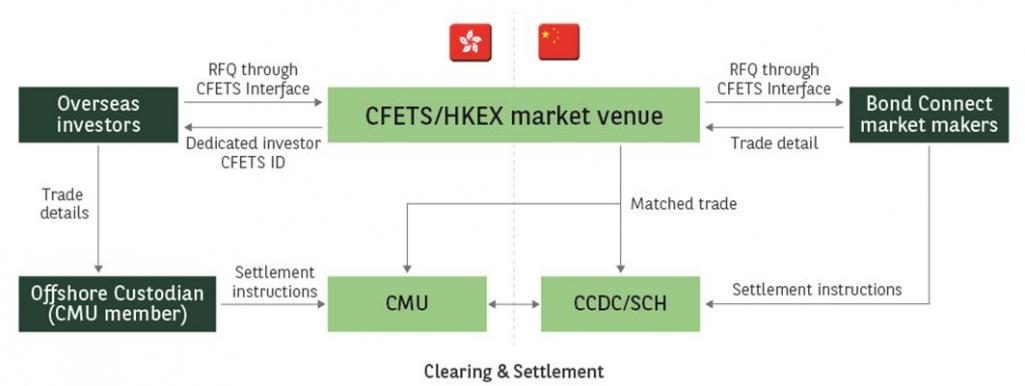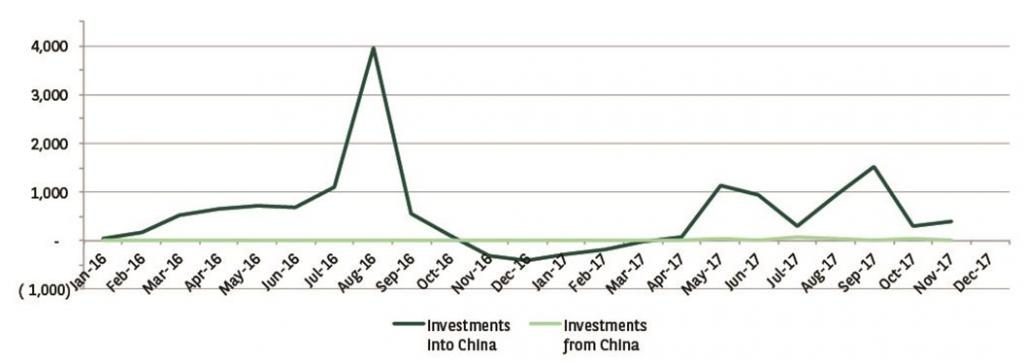The process of
opening China’s markets to allow cross-border capital flows has been carefully
controlled but the launch of landmark bilateral schemes with Hong Kong in
recent years suggests China is now prepared to take much larger strides towards
allowing cross-border investment flows.
Until relatively
recently the only way to invest in Chinese assets, or for Chinese investors to
buy assets offshore, was through programmes for qualified institutional
investors (such as QDII, QFII and RQFII), each of which required a licence and
carried strict quotas. But mutual market access (MMA) schemes launched in
recent years via Hong Kong-such as Stock Connect, Bond Connect and the Mutual
Recognition of Funds programme-give outside investors licence- and quota-free
access to Chinese assets, while also providing outbound investment channels for
Chinese institutions and residents.
These are not static
programmes; each has been refined and expanded since launching and this is
likely to continue as more participants join and as regulators streamline
procedures and broaden the scope of the schemes. With the launch in 2017 of
another new scheme, namely Bond Connect, we look at all the different
cross-border investment structures available to fund managers and how we
believe they are likely to develop.
Stock Connect
The first cross-border equities trading channel, Shanghai-Hong Kong Stock Connect, went live in November 2014, allowing investors from either side to buy and sell selected stocks listed on the two cities’ exchanges. Originally launched with an aggregate quota for cross-border trades, this was abolished in August 2016 when a second Stock Connect was announced, between Hong Kong and Shenzhen (although a daily “net buy” quota of RMB13 billion (USD2 billion) for northbound trades, and RMB10.5 billion (USD1.6 billion) for southbound trades, was retained). The Shenzhen-Hong Kong Stock Connect went live in December 2016 with the same daily quotas but also with no aggregate quota.These schemes are significant as they give individuals outside China, rather than just licenced qualified institutional investors, access to over 1,500 Chinese A-shares. Chinese investors, meanwhile, have access to a range of Hong Kong equities: some 318 via Shanghai and 442 via Shenzhen. Trading under the schemes has grown quickly, with average daily turnover by September 2017 of over RMB10 billion (USD1.5 billion) across the two programmes northbound, and over HKD11.6 billion (USD1.4 billion) southbound. Demand for exposure to Chinese assets is likely to rise as Chinese equities are included in global indexes: MSCI, for instance, made the decision in June 2017 to put 222 A-shares in its benchmark emerging markets index, starting from 2018.
Stock Connect appeals to offshore investors since they can buy Chinese assets in Hong Kong, using operating models that benefit from the security and clarity of that city’s regulatory regime. Another benefit of accessing Chinese markets through Hong Kong is that funding can be provided with offshore renminbi (CNH) rather than onshore (CNY), with the ability to use standardised offshore FX solutions rather than deal with the complexity of moving funds into and out of Chinese China.
With demand set to increase, enhancements to the scheme are still being rolled out. One is that in November 2017 the Special Segregated Account (SPSA) operating model for Stock Connect was refined to allow a real delivery versus payment (DVP) settlement mechanism. That is, cash and stocks will move at the same time and traders will receive payment when securities are delivered. The lack of a true DVP mechanism had been holding back some investors as it was not compliant with some regulations, such as those governing Luxembourg-registered UCITS funds (although this was not an issue for BNP Paribas Securities Services clients, who from day 1 have been able to use an integrated solution that recreates real DVP through partner brokers).
Bond Connect
Bond Connect is the newest addition to the MMA suite, launched in July 2017. It marks the evolution of cross-border access to China’s USD9.4 trillion bond markets – the third largest in the world – which until early 2016 were accessible in a limited fashion via the QFII and RQFII quota-based schemes. In February 2016 China deregulated the market to allow direct quota-free access to its interbank bond market (known as CIBM Direct). Bond Connect now offers a supplementary channel for foreign institutional investors to trade in onshore debt securities.
As with Stock Connect, foreign investors can use Bond Connect to buy Chinese assets from Hong Kong, with no need to open onshore trading, custody and settlement accounts. This makes ring-fencing China access simple, since investors with access to Stock Connect will be able to use the proceeds for Bond Connect and vice-versa. Similarly, funding can be supplied in CNH rather than CNY. In addition, access to the scheme is much faster than through CIBM Direct. Applications for participation can be processed in a matter of days, whereas those for CIBM Direct could take 4-8 weeks.
The execution process is ostensibly simpler too. Trades under Bond Connect can be placed on a dedicated e-trading interface, which sends requests for quotations to eligible onshore market makers, rather than routed through an onshore bond settlement agent.
However, in practice, this results in more links in the chain since foreign investors need their Hong Kong custodian to act on their behalf through the Central
The major MMA schemes will continue to be refined as China moves towards opening its capital markets in a controlled fashion.
With only seven weeks between the announcement of Bond Connect and its launch it is not surprising that the market is continuing to work to add further automation to the operating model and that the processes are not yet as refined as other Mutual Access Schemes (for one thing, it only applies for the moment to northbound trades; southbound trades will be developed in future). Many of the processes surrounding China’s clearing and settlement mechanisms are less efficient than market participants would like. But as with Stock Connect, refinements will be made on an ongoing basis, including to settlement processes, hedging options and other aspects of the scheme.
Mutual recognition of funds
The Mutual Recognition of Funds (MRF) scheme is another landmark MMA agreement, offering streamlined procedures for Hong Kong and Chinese domiciled funds to be distributed in each other’s markets. The scheme was launched in December 2015 and was perceived as a major potential boost for Hong Kong’s status as a fund management centre, not least because eligible northbound funds must be domiciled in the city and must have a one-year track record, while only 50% of the value of the fund’s units can be sold to investors in China.The MRF scheme got off to a modest start: by December 2017 some 50 Chinese funds had been approved for southbound distribution and ten Hong Kong funds for sale in China, with some market participants complaining about a slow approvals process. But momentum in northbound approvals appears to be picking up, while net sales of southbound funds has also been accelerating.

Hong Kong regulators are also keen to accelerate the process for international fund managers. In the past, the fund setup process in the city could take up to a year, after which funds still need a year’s track record before they can be sold on the Chinese, following China Securities Regulatory Commission (CRSC) approval. The Securities and Futures Commission (SFC) has introduced a two-stream fast track approvals process for new funds setting up in Hong Kong, aiming to wave through “standard” funds in one month and “non-standard” funds in around two or three months, and no longer than six.
Fund managers are also keen for regulators to re-examine the “50-50” rule that limits sales of MRF products to Chinese investors of 50% of the value of a fund’s units, since this obliges them to grow their fund’s assets outside China even as they seek to do so within it. It is partly to help meet this target that Hong Kong regulators have been seeking other mutual recognition deals – such as those signed with France in July 2017 and Switzerland in December 2016. Discussions are currently on-going with other European countries, giving Hong Kong-based funds the chance to tap into capital pools outside the Chinese.
Growing together
The major MMA schemes discussed here are stepping stones, rather than the final destination, and they will continue to be refined as China moves towards opening its capital markets in a controlled fashion.Under Stock Connect the number of securities covered by the programme is likely to rise. Discussions are also ongoing for the launch of “ETF Connect” and “IPO Connect” when “relevant conditions” have been met. Whether this will be rolled into existing Connect mechanisms or will entail a new programme remains to be seen. Meanwhile Bond Connect, the newest scheme, and the MRF will continue to evolve as regulators, participants and investors get used to and provide feedback on the channels.
The issue with the ongoing refinement of these schemes is the need to have a trusted partner who can help in all stages of the process, from setup to execution to settlement. BNP Paribas Securities Services’ experience in Hong Kong and China, acting as market maker, custodian, settlement agent and trustee, means it is uniquely positioned to help market participants take advantage of these mutual market access programmes as they continue to develop.